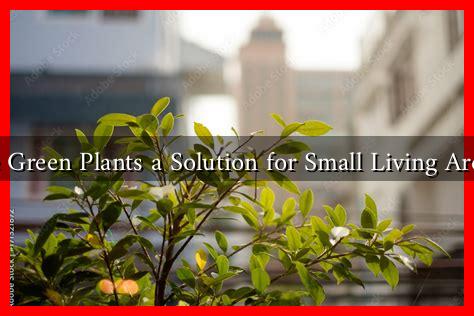-
Table of Contents
Are Green Plants a Solution for Small Living Areas?
As urban living spaces become increasingly compact, the quest for effective ways to enhance our environments has never been more pressing. One solution that has gained traction is the incorporation of green plants into small living areas. Not only do plants beautify a space, but they also offer numerous benefits that can significantly improve the quality of life in confined settings. This article explores the advantages of green plants in small living areas, practical tips for incorporating them, and the science behind their positive effects.
The Benefits of Green Plants in Small Spaces
Integrating plants into small living areas can yield a multitude of benefits, including:
- Improved Air Quality: Plants are known to purify the air by absorbing toxins and releasing oxygen. According to a study by NASA, certain houseplants can remove up to 87% of indoor air pollutants in just 24 hours.
- Enhanced Mood and Well-being: Research has shown that being around greenery can reduce stress and anxiety levels. A study published in the Journal of Environmental Psychology found that participants reported feeling more relaxed and happier in environments with plants.
- Increased Productivity: A study by the University of Exeter found that employees working in environments with plants were 15% more productive than those in plant-free spaces.
- Natural Humidifiers: Plants release moisture into the air through a process called transpiration, which can help maintain humidity levels in small living areas, especially during dry seasons.
Choosing the Right Plants for Small Spaces
When selecting plants for small living areas, it’s essential to consider factors such as light availability, maintenance requirements, and space constraints. Here are some popular options:
- Succulents: These low-maintenance plants thrive in bright light and require minimal watering, making them ideal for small spaces.
- Spider Plants: Known for their air-purifying qualities, spider plants can adapt to various light conditions and are easy to care for.
- Pothos: This trailing vine is perfect for hanging planters or shelves, adding a touch of greenery without taking up much space.
- Peace Lilies: These beautiful plants not only bloom indoors but also help filter out harmful chemicals from the air.
Creative Ways to Incorporate Plants
In small living areas, maximizing space is crucial. Here are some creative ways to incorporate plants without overcrowding your environment:
- Vertical Gardens: Utilize wall space by creating a vertical garden. This can be achieved with wall-mounted planters or trellises.
- Hanging Planters: Suspend plants from the ceiling or high shelves to draw the eye upward and create an illusion of more space.
- Multi-functional Furniture: Consider furniture that doubles as plant holders, such as coffee tables with built-in planters.
- Windowsills: Take advantage of natural light by placing small pots on windowsills, where they can thrive and be easily accessible.
Case Studies and Statistics
Several studies and real-life examples highlight the positive impact of plants in small living areas. For instance, a case study conducted in a New York City apartment showed that adding plants improved the residents’ overall satisfaction with their living space. The study reported a 30% increase in perceived livability after introducing greenery.
Moreover, statistics from the American Society of Landscape Architects indicate that 90% of homeowners believe that plants enhance their quality of life, with many citing improved mood and relaxation as key benefits.
Conclusion
In conclusion, green plants are not just decorative elements; they are powerful tools for enhancing the quality of life in small living areas. From improving air quality to boosting mood and productivity, the benefits of incorporating greenery into compact spaces are substantial. By choosing the right plants and employing creative strategies for their placement, anyone can transform their small living area into a vibrant, healthy environment. As urbanization continues to rise, embracing the power of plants may be one of the simplest yet most effective solutions for creating a more livable space.
For more information on the benefits of indoor plants, you can visit NCBI.

